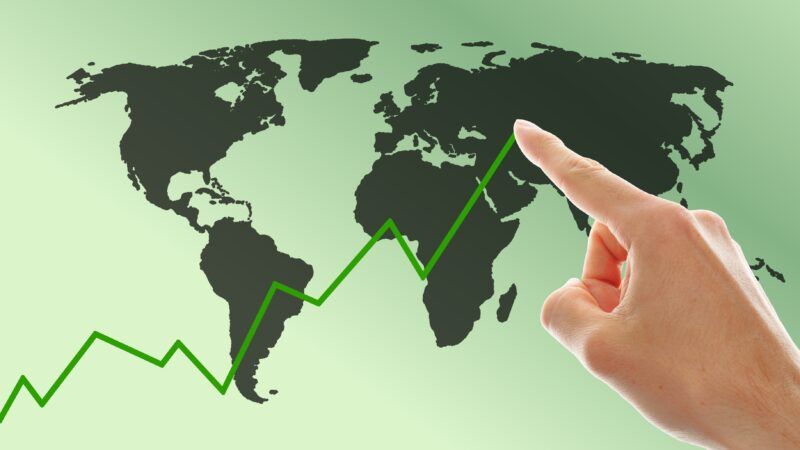The Global Middle Class Has Tripled in Size Since 2000
And the global upper-middle class doubled.

The BBC buried the lede when it reported that the number of millionaires increased by 5.2 million last year, bringing the total to 56.1 million globally during 2020. The bigger news in the BBC's source—the 2021 global wealth report by the financial services company Credit Suisse—is that membership in the global middle class has exploded over the last two decades.
The report defines the global middle class to include adults whose assets amount to between $10,000 to $100,000. This group, the report says, has more than tripled in size in this century, "from 507 million in 2000 to 1.7 billion in mid-2020. This reflects the growing prosperity of emerging economies, especially China, and the expansion of the middle class in the developing world." Meanwhile, the number of upper-middle class adults—with wealth ranging from $100,000 to $1 million—has more than doubled since 2000, from 208 million to 583 million.
These wealth trends track the trajectory of rising per capita global incomes. Back in 2018, Brookings Institution scholar Homi Kharas and his colleagues reported that half of the world's people lived in households that qualified as middle-class or rich. The Brookings researchers defined the global middle class as people earning, on a purchasing power parity basis, anywhere from $11 to $110 per day.
Brookings also reported that the percentage of people around world living in extreme poverty (defined as living on less than $2 per day per person) dropped from 42 percent of people (1.9 billion) in 1981 to under 8 percent (600 million) in 2018. Sadly, the share of people living in extreme poverty ticked up in 2020 to more than 9 percent (715 million) of the world's population, thanks to the economic effects of the global COVID-19 pandemic. The fall in extreme poverty is likely to stall for the next several years, as the pandemic continues to batter poor countries' economies.


Show Comments (39)